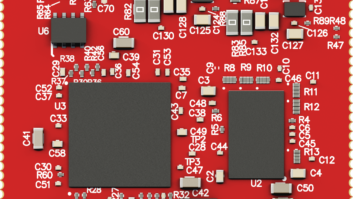The AV over IP (AVoIP) market is moving from the early adopter phase to rapid adoption. Enterprises are turning to AVoIP because it provides flexibility and scalability and enables remote support and cloud-based services. Using existing Cat5e and Cat6e cables, installed as part of the enterprise local area network (LAN), removes the need for dedicated AV cabling infrastructure. This combination can reduce the total cost of ownership.
AVoIP solutions are created as walled gardens thanks to proprietary formatting; connecting different vendor solutions or even legacy matrix-switched installations has been discussed since the introduction of AVoIP, but the complexity means it remains out of reach for most enterprises. However, this is changing. The demand for standardised, open-accessible technology has led to the development of specific standards: AES67 for audio, SMPTE ST2110 for video, and Networked Media Open Specifications (NMOS) for system management.
IPMX, which shares many technical benefits with ST2110, has already demonstrated its ability to support interoperability. It also supports asynchronous sources of video and audio while managing latency issues. At InfoComm 2022, the Alliance for IP Media Solutions (AIMS) demonstrated how ST2110 and IPMX could interoperate. As the number of vendors supporting these standards increases, the ability for different vendors’ flavours to interoperate will grow.
In 2023, the old and new worlds will have to find a way to co-exist. While AVoIP solutions offer benefits over legacy solutions, legacy solutions will not disappear overnight. Installed solutions will likely remain in place so long as there is no need to upgrade. The challenge facing enterprises in 2023 will be knowing when to move from legacy solutions to IP-based solutions and at what speed.







